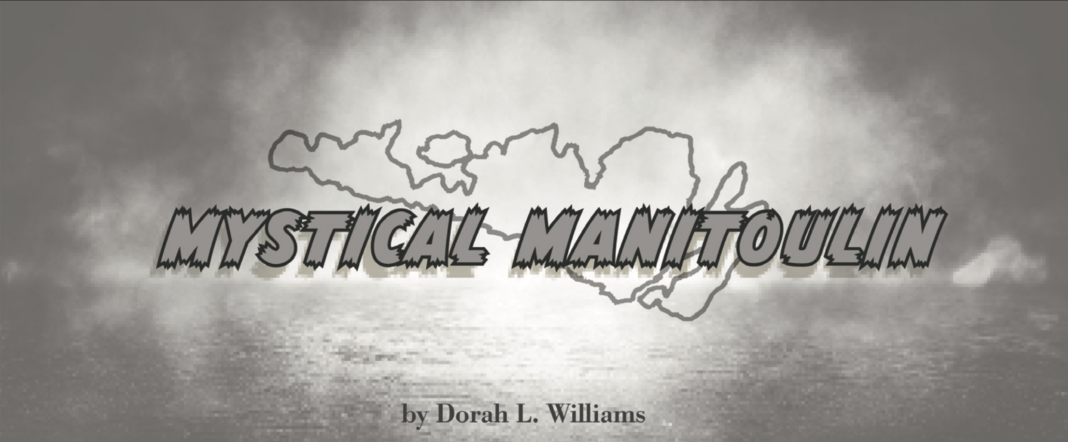A cryptid, as defined by Merriam-Webster, is “an animal (such as Sasquatch or the Loch Ness Monster) that has been claimed to exist but never proven to exist.”
There are well-known animals today, though, to which the exact definition of cryptid would have also applied not so long ago.
In the mid-1800s, zoologists classified the giant squid as Architeuthis dux by analyzing rare body parts that had washed up on beaches and eyewitness testimonies. Yet, it was just within the past two decades researchers finally captured the species on camera in real-time in its native habitat. Known in mythology as The Kraken since the 12th century, the giant squid no longer remains referenced only in legends that once terrified the bravest sailors.
What about the sirens of the sea? Zoologist Karl Illiger classified manatees as Sirenia in the early 1800s, after the sea nymphs in Greek mythology, because he thought they looked like mermaids.
He wasn’t the only one. Originating thousands of years ago, the folklore of mermaids spread worldwide. As far back as the 15th century, documentation proves sea captains sincerely believed they were reporting “mermaid” sightings in their ship’s logs when they saw a manatee. Christopher Columbus even disappointedly noted that the three “mermaids” he’d seen during a voyage to the West Indies were not nearly as beautiful as depicted in paintings.
As we decipher fact from fantasy, we should remember that inexplicable natural wonders have inspired most legends.
One of the most famous cryptid examples, the Loch Ness Monster, popularly known as Nessie, has fascinated me since childhood. Yet, despite many eyewitness descriptions and blurry photos of supposed sightings, I was always skeptical. Then I learned of Champ, the American version of Nessie said to lurk in Vermont’s Lake Champlain. I finally realized how many universal accounts are alike and have spanned centuries. Similar reports have come from across Canada, too, including Okanagan Lake’s famous Ogopogo in British Columbia. And what about closer to home?
The Great Lakes region has its share of legends and astonishing accounts of Lake Monsters too. So, let’s open our minds to the possibility there could be more to these aquatic cryptids than mere folklore.
Who knows what kinds of creatures hide beneath the surface of these vast bodies of water?
Case in point:
Years ago, my spouse worked in the construction industry. One day, I joined him on an inspection at a summer camp on Georgian Bay, getting ready to reopen for the season.
Upon our arrival, I wandered to the rocky shoreline to admire the incredible view. My husband conducted his business further up the property in the cabins. It was a lovely day, and I enjoyed the mild breeze and peaceful setting without a care in the world, unaware that something entirely unexpected was lurking in the water nearby.
The peacefulness suddenly ended when a loud commotion caught my attention in the bay. In the distance, a massive flock of seagulls descended onto the water’s surface and began frantically attacking something. Their frenzy was so bizarre. I could see the birds swarming at something long and dark, which looked like a colossal pipe or hose at first. But I couldn’t understand why the birds would react to an inanimate object like that.
As this uproar continued, I retrieved binoculars from the car for a better view. When magnified, the birds looked even crazier. There were dozens of them, and all were attacking whatever was in the water. Only its mid-section was visible, but it looked about 30 feet long and, as strange as this sounds, exactly like a giant snake or eel. I watched as it kept undulating in the otherwise calm water. Each movement caused frantic shrieks from the seagulls. Every few moments, it would propel itself, trying to get clear of the attacking birds. But it remained an ongoing target because it stayed on the water’s surface.
The whole scene was spellbinding. I had no idea what I was watching, but I’ll never forget that sight.
Most of the flock had dissipated when my husband completed his work and later joined me at the water’s edge. I could no longer see the long black creature that had been under their attack, even with binoculars. Still, I explained what I had seen, to his amusement and that of the camp owner, who also joined us.
When I asked if a large pipe in the bay was visible from his property, the man laughed and shook his head. He was the third generation to own that camp, so he knew that area very well and suggested it must have been a fish. I assured him it wasn’t.
The camp owner’s fish theory was a reasonable assumption, and he understandably considered that natural explanation first.
Elsewhere in Ontario, there have been over a century of reports of Mussie living in Muskrat Lake in the Ottawa Valley. Witnesses have described it in sometimes-contradictory ways: a serpentine creature, a Loch Ness Monster-lookalike (plesiosaur), and even a walrus. Yet, some have also sworn it looks like a giant sturgeon, which typically grows to about six or seven feet long in Muskrat Lake.
However, some species can be enormous and could even account for Ogopogo’s fame, too. For example, in British Columbia, their white sturgeon can reach 20 feet and live for a century.
Likewise, many documented reports of Saskatchewan’s Turtle Lake Monster have been recorded over several decades, mostly describing prehistoric plesiosaur or giant sturgeon-like creatures.
Because sturgeon have such long lifespans, they can live, and continue to grow, in certain bodies of water for a very long time. For example, they are the largest fish species in the Great Lakes and have lived here for over ten thousand years. But, they have existed on the planet for over two hundred million years, since the Triassic Period! So, these remarkable living fossils could rationally explain some of these mysterious encounters.
However, this story continues…
My husband enjoyed teasing me on the drive back to the city. He thought it was comical that his wife insisted she saw a Lake Monster in Georgian Bay when common sense dictated it likely was a sturgeon.
He stopped laughing as we checked our phone messages when we got home.
The camp owner had called to say, “Your wife was right! A few minutes after you left, my son-in-law and I noticed what she described seeing in the bay further down the shoreline. After seeing that, we are still stunned and wanted to let you know I stand corrected. It definitely was not a fish!”
The dumbfounded look on my husband’s face gave me satisfaction after his doubt, I must say. But I was glad to hear others also saw it. I’m sure they’ve always remembered that incredible sight, too.
I’ve spent time researching eyewitness testimonies and delving into an international database of Lake Monster reports, and the stories told are fascinating. Most sightings describe something similar and spine-tingling: giant eel or snake-like beasts lurking in the depths.
A few years ago, a scientific study found significant levels of eel DNA in Loch Ness. This discovery has caused some to question whether Nessie might be a giant eel mutated to exceptional size. That is a shocking consideration, but if it could occur there, then elsewhere too, and explain the countless worldwide sightings.
Jeremy Wade, host of the popular show “River Monsters,” is a notable expert in aquatic life. He has spent years exploring the world’s waterways, searching for evidence of unknown and mysterious creatures. So what does he think of this theory? Having extensive knowledge on this subject, Wade believes eels could not grow to the enormous sizes described in so many reports of Lake Monster sightings. I have yet to find any scientific documentation of their lengths exceeding a few feet in the Great Lakes region either. Yet credible eyewitnesses J4
remain adamant in their descriptions of these enormous eel-like sightings.
What lurked beneath that camp’s waterfront on Georgian Bay has yet to be discovered. That only increases the sense of intrigue, though, and stories like this continue to make me wonder what else could hide in the depths of our lakes and oceans.
As our understanding of the world’s aquatic ecosystems grows, let’s hope we will discover the truth behind these mysterious sightings one day. But until then, the ongoing research continues to be fascinating!
Do you also have an exciting and mystical tale to tell? Whether you’ve experienced a haunting, a mysterious cryptid sighting, or a brush with the inexplicable, share it with Canadian author Dorah L. Williams at dorahlwilliams@gmail.com
Your story, too, could be featured in an upcoming column of Mystical Manitoulin!





